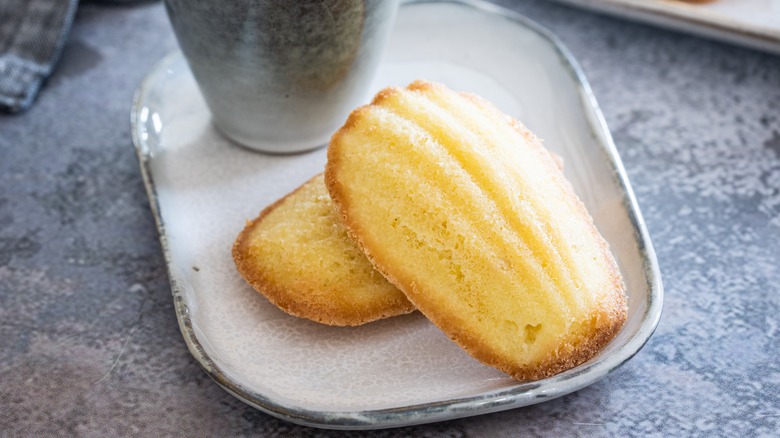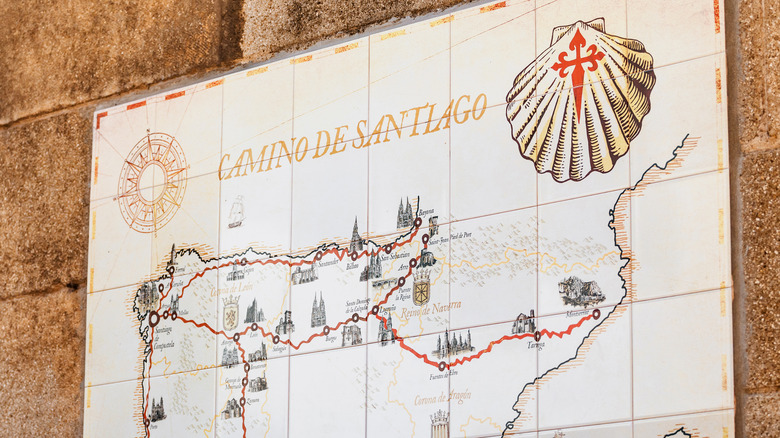The Reason French Madeleines Have Their Unique Shell Design
In France, there is no shortage of beautiful desserts. This is true in both flavor and presentation. Think of the vanilla, sugar-crusted smoothness of a crème brûlée or the vibrant colors of a display of macarons. Think of the simplicity of sablés shortbread cookies, the rustic charm of a galette, or the yuletide decadence of a chocolate bûche de Noël. All beautiful, all wonderful in their own special way. But if there is one French dessert that is shrouded in as much mystery as sweetness, it's the lovely madeleine.
There are competing stories about how this silky soft shell came into existence. According to The Washington Post, the prevailing tale is that an 18th-century Duke of Lorraine named Stanislas Leszczynski, himself an accomplished baker, had a maid named Madeleine baking for him at his estate in Commercy, France. Madeleine prepared these cakes for the Duke, who loved them so much that he subsequently shared them with the royal court at Versailles, giving all the credit to his talented maid. The court loved them equally as much, and the madeleine's popularity soon spread throughout the country. Apart from the madeleine's sponge cake consistency and delicate flavor, the little cake's defining feature is its shell design. The origin of the shape is somewhat as mysterious as the madeleine itself, but the acknowledged tale has to do with a popular and poignant religious pilgrimage.
The significance of a shell
The scallop shell – off of which the shape of the madeleine is based — carries with it a certain amount of spiritual significance. From the Pyrenees in the east to the Atlantic coast in the west runs El Camino de Santiago, the Way of Saint James. According to American Pilgrims, the Camino is a pilgrimage across northern Spain to visit the burial place of Saint James (Saint Jacques in French) one of the Apostles of Christ. This pilgrimage has existed for well over a thousand years. The scallop shell has become synonymous with the Camino as a symbol of Saint James and a guiding symbol along the trail to Santiago de Compostela.
The importance of the scallop shell for the French, in particular, cannot be overstated. The Saint Jacques scallop is a beloved bivalve that is cherished across France and even has its own brotherhood designed to protect the scallop's heritage. It is from this scallop and the Camino that another origin story for the madeleine emerges. The legendary French author Marcel Proust, himself a great lover of the madeleine, explains that the madeleine was invented in the Middle Ages at a French checkpoint en route to the Camino called Illiers-Combray. As pilgrims frequented the town, bakers developed scallop-shaped molds for the cake, making the madeleines small for travel and storage, but also in honor of the pilgrims and the saint for whom they journeyed (via Napoleon.org).

